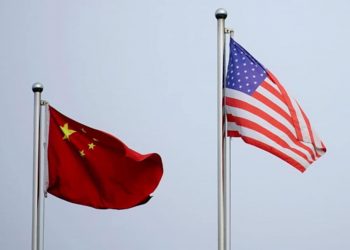US House Armed Services Committee, WASHINGTON, DC: This is the first hearing of the Military Personnel Subcommittee in the 109th Congress. In my view there is no more important topic for this subcommittee to focus on than the adequacy of Army forces (active, Guard and reserve) to prosecute the Global War on Terrorism while also carrying out the challenges of restructuring and resetting the force. I want to welcome not only the Members returning to the subcommittee, but also our new members.
The subcommittee has established a record over the 107th and 108th Congresses of advocating for increases in active Army forces to meet the full range of missions the nation has assigned to it. To the subcommittee, the indicators of an Army severely challenged for manpower and structure, of an active Army too small to meet its requirements without a potentially unsustainable reliance on the reserve components, were readily apparent. The need for increases in the active Army, however, was strongly resisted by DOD until just last year. Then begrudgingly, both the Army and DOD concurred that an increase – but only a temporary increase – of 30,000 was needed in active Army strength.
The President, by signing the National Defense Authorization Act for Fiscal Year 2005 in October, enacted a down payment of 20,000 in that active Army increase. I will expect to see a further increase of at least 10,000 provided as part of the fiscal year 2006 Defense Authorization.
As we now know, less than two months after the enactment of the active Army increase, Lt. Gen. Helmly communicated his concerns to Army leaders that unless major changes were made, the Army Reserve would be unable to meet requirements not only for OEF and OIF, but also for other missions assigned to it by the national security strategy. Furthermore, he raised concerns about his ability to reset and train the force to properly prepare it for those future missions.
It took courage for General Helmly to set out his concerns with the candor and directness as he did. I commend him for that. He has raised significant issues that have implications for all elements of the Army – active Guard and reserve. Given the incredible inter-reliance for capability that now exists between those elements it is critical that we not only understand the parameters of the problems, but also the proposed solutions.
Today begins that process. At the outset, I bring these perspectives:
–The Army, and by that I mean active, Guard and reserve, remains too small and improperly structured to perform all the Nation is asking it to do.
–The pace at which we are employing the Guard and Reserve is not sustainable for the long term;
–There appears to be an over-reliance on interim measures to meet short-term manning and structure requirements to get from one OIF/OEF rotation to another rather than a willingness to adopt a longer term strategy and long term solutions.
–Some of DOD's interim mitigating strategies could be harmful in the long run. Among those of concern are:
*The use of provisional units in lieu of creating permanent units;
*Over-reliance on volunteers, combined with the dysfunctional mobilization practices, that turn the Army Guard and Reserve into pools of individual replacements, rather than sources of structured units;
*The borrowing from other services like the Navy and Air Force units and capabilities to meet Army requirements. This practice, similar to the cross-leveling done inside the Army, could have the same long-term effect on those Navy and Air Force units that cross-leveling has had in the Army: leaving the Navy and Air Force units which have given up capabilities to the Army without their full capability should they be subsequently mobilized.
I welcome today the perspectives of our two panels of witnesses, the first of which will present those of the Army's active and reserve components, followed by testimony from the Department of Defense.








